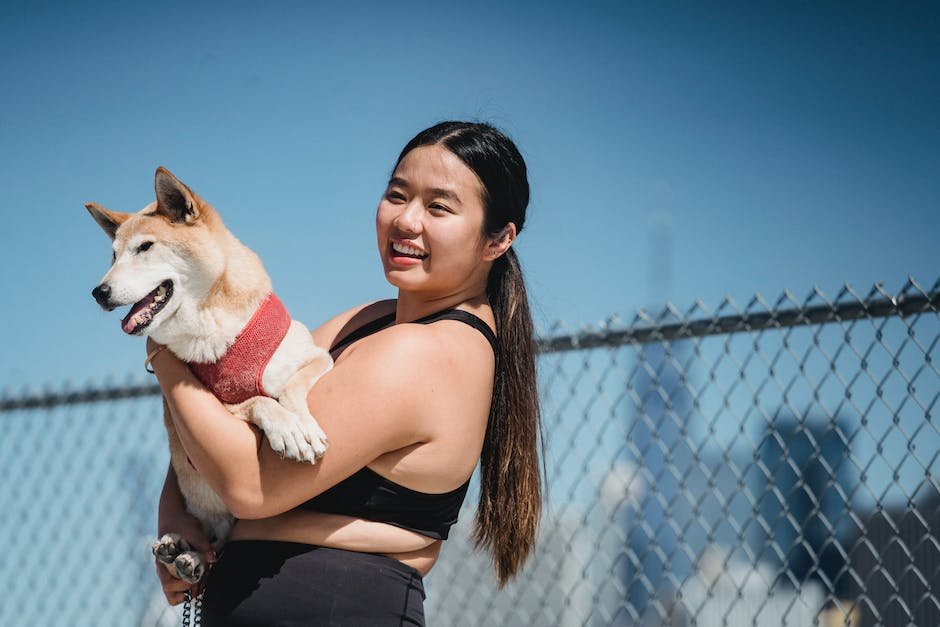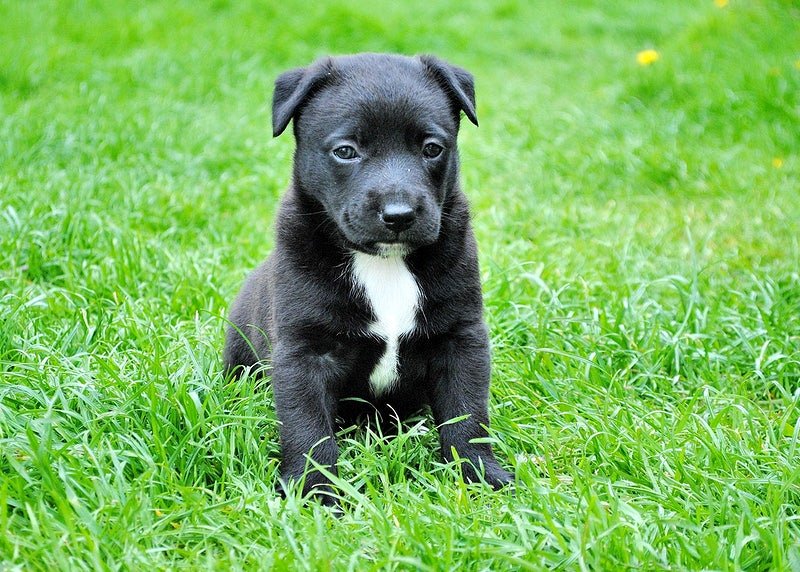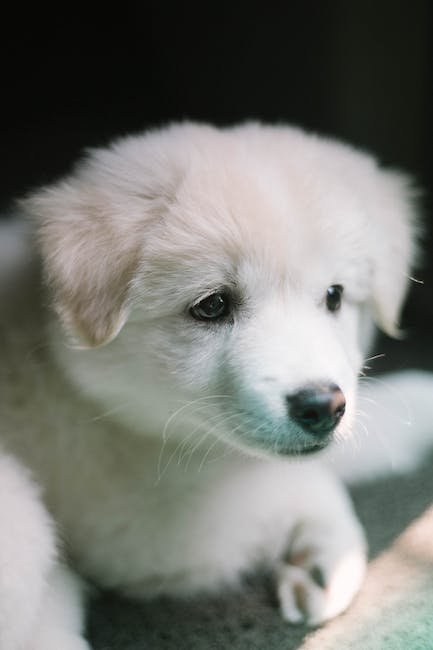As the sun begins to rise, casting a warm glow upon the dew-kissed grass, your furry bundle of joy eagerly wags its tail, ready for a day filled with adventures at the park. But the moment you step foot into the realm of swirling scents and bounding paws, your once exuberant pup seems to shrink, fear etching into its innocent eyes. It cowers behind your legs at the sight of other dogs, retreating from the playful camaraderie that seems to come so naturally to their four-legged counterparts. If this all-too-familiar scenario resonates with your canine companion, fear not, for we have crafted a comprehensive guide to help your precious pup overcome the obstacles preventing them from blossoming into the social butterfly they were destined to be: Puppy Training for Fear of Other Dogs: Social Skills 101.
Table of Contents
- Puppy Training for Fear of Other Dogs: Social Skills 101
- Understanding the Root Causes of Fear and Anxiety in Puppies
- Building Confidence in Your Puppy through Positive Reinforcement
- Gradual Exposure: Introducing Your Puppy to Other Dogs Safely
- Teaching Proper Communication: Canine Body Language and Signals
- Expert Tips for Managing and Overcoming Fear in Puppy’s Socialization Journey
- Q&A
- To Wrap It Up

Puppy Training for Fear of Other Dogs: Social Skills 101
Helping your puppy develop healthy social skills with other dogs is an essential part of their overall training and development. If your furry friend is displaying fear or anxiety around other dogs, it’s important to address this issue early on to prevent it from becoming a long-term problem. Here are some effective strategies to facilitate your puppy’s journey towards becoming a confident and well-adjusted social butterfly.
1. Gradual Exposure: Gradual exposure to other dogs is key when helping your puppy overcome their fear. Start by introducing your pup to calm and friendly dogs in controlled environments. Allow them to observe and interact at their own pace, ensuring positive experiences and preventing overwhelming situations.
2. Positive Reinforcement: Utilize positive reinforcement techniques to create associations between positive experiences and interactions with other dogs. Reward your furry friend with treats and praise whenever they display calm and relaxed behavior in the presence of other dogs. This will help build their confidence and dispel their fear over time.
3. Desensitization and Counterconditioning: Desensitization and counterconditioning exercises can be highly effective in helping your puppy overcome their fear. Gradually expose them to other dogs from a distance, rewarding them for staying calm and focused. Over time, decrease the distance between the dogs while maintaining positive experiences to rewire their emotional response.
Remember, patience and consistency are key when training your puppy to overcome fear of other dogs. Always prioritize their safety and well-being, and seek professional help if necessary. With dedication and a structured training approach, your puppy will soon develop the social skills they need to confidently navigate the wonderful world of doggy interactions!

Understanding the Root Causes of Fear and Anxiety in Puppies
Puppies are adorable creatures that bring joy and happiness into our lives. However, sometimes they can exhibit signs of fear and anxiety, leaving us wondering what could be causing these emotions. is crucial to help them overcome these issues and ensure their well-being.
1. Lack of Socialization: Puppies that haven’t been properly socialized may experience fear and anxiety when faced with new environments, people, or other animals. It’s essential to expose them to different stimuli from an early age, gradually introducing them to various situations, sounds, and smells.
2. Traumatic Experiences: Just like humans, puppies can experience traumatic events that leave a lasting impact on their emotions. Whether it’s a loud noise, an aggressive encounter, or being separated from their littermates too early, these experiences can trigger fear and anxiety in puppies.
3. Genetic Predisposition: Some dogs are born with a predisposition to anxiety, inherited from their parents. Certain breeds are more prone to developing fears and phobias, such as separation anxiety or noise sensitivity. Understanding the breed’s tendencies can provide valuable insights into managing and preventing anxiety in puppies.
It’s important to remember that every puppy is unique and may have different triggers for fear and anxiety. By recognizing and addressing these root causes, owners can create a safe and supportive environment to help their furry friends overcome these emotions and thrive.
Building Confidence in Your Puppy through Positive Reinforcement
Creating a strong foundation of confidence in your puppy is crucial for their overall development and well-being. Positive reinforcement is a powerful tool that can be used to boost your puppy’s confidence and help them navigate the world with ease. By focusing on the positive, you can create a safe and supportive environment that encourages your pup to grow and learn.
Here are some effective ways to build confidence in your puppy:
- Socialize your puppy: Introduce your puppy to a variety of people, animals, and environments from an early stage. This exposure helps build their resilience and adaptability, making them more confident in new situations.
- Reward successes: Acknowledge and reward your puppy’s achievements, no matter how small. Whether it’s learning a new command or conquering a fear, praise and treats go a long way in boosting their self-assurance.
- Provide a safe space: Create a designated area where your puppy can retreat to when they feel overwhelmed. This safe haven will give them a sense of security and help ease any anxiety they may experience.
- Challenge them gradually: Gradually expose your puppy to new experiences and slightly challenging situations. This gradual approach allows them to build confidence by successfully overcoming obstacles, all while feeling supported and encouraged.
Remember, each puppy is unique, and building confidence takes time and patience. By utilizing positive reinforcement techniques and providing a nurturing environment, you can help your puppy develop into a confident and well-adjusted adult dog.
Gradual Exposure: Introducing Your Puppy to Other Dogs Safely
When it comes to introducing your puppy to other dogs, it’s important to take a gradual approach to ensure their safety and well-being. Gradual exposure is a key component in helping your furry friend build positive associations and develop good social skills. Here are some helpful tips to make the process smoother:
- Start with familiar faces: Begin the introduction with dogs that your puppy is already acquainted with, such as canine friends or family pets. This familiarity will help ease any initial anxiety or nervousness.
- Choose controlled environments: Opt for neutral locations, like a fenced-in backyard or a quiet park, where distractions are minimal. These environments provide a safer space for your puppy to explore and interact with other dogs.
- Monitor body language: Pay close attention to the body language of both your puppy and the other dogs. Look for signs of fear, aggression, or discomfort. If any negative behavior arises, separate the dogs and try again later.
- Positive reinforcement: Reward your puppy with praise, treats, or playtime when they exhibit friendly behavior towards other dogs. This positive reinforcement will help reinforce their confident and friendly nature.
Remember, each puppy is unique and may require a different pace of gradual exposure. Patience and consistency are key throughout this process. By introducing your puppy to other dogs in a safe and controlled manner, you’re setting the foundation for a lifetime of positive social interactions.
Teaching Proper Communication: Canine Body Language and Signals
In the realm of understanding our furry friends, communicating effectively with our canine companions is paramount. While they may not use words like we do, dogs have their own intricate language comprised of body movements and signals. Learning to decode and interpret these cues is essential for fostering a harmonious relationship with our four-legged pals.
Canine body language:
- Tail: The wagging of a dog’s tail is not always a universal sign of happiness. The position, speed, and intensity of the wag can convey varying emotions, such as joy, fear, or even aggression.
- Posture: Puffed-up fur, a lowered body, or standing tall and stiff could indicate different states of mind in dogs. Understanding the subtleties of their posture helps us gauge their confidence level, fear, or readiness for interaction.
- Eye contact: Maintaining or avoiding eye contact can reveal a lot about a dog’s intentions. Direct, prolonged eye contact may be seen as dominant or confrontational, while averted eyes often signal submission or discomfort.
Canine signals:
- Play bows: Recognizable through the front end lowered and the rear end raised, play bows are an invitation to engage in friendly play and merriment.
- Yawning: Contrary to our human interpretation, dogs often yawn to convey stress or unease. Recognizing this signal can help us identify when our furry buddies are not at ease in their environment.
- Freezing: When a dog suddenly becomes rigid and motionless, freezing is an indication that they are assessing a situation or feeling uncomfortable. It is essential to give them space and reassurance in these moments.
By mastering the language of canine body movements and signals, we unlock an entirely new level of understanding between ourselves and our furry companions. Practicing patience and attentiveness, we can bridge the communication gap and create an environment of trust, promoting happier and healthier relationships with our four-legged friends.
Expert Tips for Managing and Overcoming Fear in Puppy’s Socialization Journey
Tips for Managing Fear in Puppy’s Socialization Journey:
1. Start Early: It is crucial to begin your puppy’s socialization journey as early as possible. Exposing them to various people, animals, and environments will help them develop confidence and resilience. Introduce them to different sights, sounds, and experiences gradually, ensuring they have positive associations with each new encounter.
2. Take it Slow: Remember, every puppy is unique, and some may be more sensitive or cautious than others. Respect their comfort zones and never force them into overwhelming situations. Gradually increase the level of exposure and always observe their body language for signs of stress or fear. By taking it slow and following their lead, you will build trust and help them overcome their fears at their own pace.
3. Reward-Based Training: Positive reinforcement is key when it comes to managing fear in puppies. Use treats, praise, and play to reward them for calm and confident behavior during socialization exercises. This will help them associate new experiences with positive outcomes, boosting their confidence and reducing anxiety. Avoid punishment or scolding, as it can worsen their fear and hinder progress.
4. Seek Professional Help: If your puppy’s fear and anxiety persist or worsen despite your efforts, don’t hesitate to seek advice from a professional dog trainer or behaviorist. They can provide tailored guidance, techniques, and exercises to help your puppy overcome their fears successfully.
Remember, patience and consistency are key components of managing and overcoming fear in your puppy’s socialization journey. With the right approach, love, and support, you can help your furry friend develop into a confident and well-adjusted adult dog.
Q&A
How can I help my puppy overcome their fear of other dogs?
Start by creating positive associations with other dogs. Gradually expose your puppy to dogs in controlled environments, using treats and praise to reward calm behavior. Seek professional help if your puppy’s fear persists.
What are some signs that my puppy is afraid of other dogs?
Watch for signs such as cowering, trembling, hiding, growling, or barking excessively when encountering other dogs. Your puppy may also attempt to escape or pull away from the situation.
Should I force my puppy to interact with other dogs?
No, forcing your puppy to interact may worsen their fear. Instead, focus on gradual desensitization and counter-conditioning techniques. Allow your puppy to approach other dogs at their own pace, offering reassurance and rewards for positive experiences.
How can I prevent my puppy from developing a fear of other dogs?
Socialize your puppy from an early age, exposing them to various dogs and positive experiences. Enroll them in puppy socialization classes, where they can learn proper behavior and gain confidence in a controlled environment.
What if my adult dog is afraid of other dogs?
The same desensitization and counter-conditioning techniques can be applied to adult dogs. Seek the assistance of a professional dog trainer or behaviorist to create a tailored training plan for your dog’s specific needs.
Can I use treats to distract my puppy from their fear when encountering other dogs?
Yes, using treats as a positive distraction can be helpful. Give your puppy a high-value treat when they see another dog, directing their attention away from fear and towards a positive experience.
Is it possible for my puppy to overcome their fear of other dogs completely?
While some puppies may never fully overcome their fear, with proper training and socialization, most can learn to manage their fear and respond appropriately in the presence of other dogs.
How long does it take to train a puppy to be less afraid of other dogs?
The time it takes to train a puppy to be less afraid of other dogs varies for each individual. It depends on the puppy’s temperament, previous experiences, and the consistency of training. It could take anywhere from several weeks to several months.
What should I do if my puppy’s fear of other dogs seems to be getting worse?
If your puppy’s fear is worsening or not improving despite your efforts, it’s important to seek professional help. A qualified dog trainer or behaviorist can assess your puppy’s problem and provide effective strategies to address their fear.
To Wrap It Up
In conclusion, puppy training for fear of other dogs is a vital step towards ensuring a happy and well-adjusted canine companion. Far too often, our furry friends are bombarded by anxiety and uncertainty when faced with their four-legged counterparts. However, armed with the knowledge and techniques highlighted in this article, you have the power to embark on an exciting journey of social skills development for your beloved pup.
Remember, the key to success lies in patience, consistency, and a whole-hearted commitment to your pup’s emotional well-being. Starting small and gradually exposing your furry friend to new doggy encounters builds a foundation of trust and confidence in their social abilities. By using positive reinforcement and gentle guidance, you can guide your puppy towards conquering their fears, one pawstep at a time.
But let’s not forget that this journey is not limited to just the four-legged companions. As pet owners, it is our responsibility to foster a safe and supportive environment for all dogs that share our lives. So, let’s continue to promote understanding and empathy among our fellow dog enthusiasts. By exchanging stories, tips, and advice, we can create a network of support for puppy parents facing similar challenges. After all, learning from each other’s experiences helps strengthen the bond between people and their furry friends.
So, fellow dog lovers, let’s embark on this adventure of social skills 101 together. As we delve into a world where our pups greet their peers with wagging tails and confident stances, we’ll witness a remarkable transformation in their overall happiness and well-being. With a little determination, a sprinkle of creativity, and an abundance of love, we can turn our precious puppies into bold and courageous companions - ready to fearlessly explore the vast tapestry of the doggy world.
As an affiliate, my content may feature links to products I personally use and recommend. By taking action, like subscribing or making a purchase, you’ll be supporting my work and fueling my taco cravings at the same time. Win-win, right?
Want to read more? Check out our Affiliate Disclosure page.
